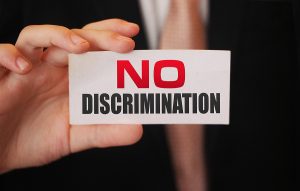 According to a lawsuit filed by the US Equal Employment Opportunity Commission, the company’s criminal screening process resulted in discrimination in the hiring process.
According to a lawsuit filed by the US Equal Employment Opportunity Commission, the company’s criminal screening process resulted in discrimination in the hiring process.
In the lawsuit there is a distinction made between the “intent” to discriminate, and the fact that their process resulted in discrimination.
The purpose of this blog post is to inform employers of the steps necessary to prove that the hiring decisions were based on legitimate factors in accord with EEOC regulations. (See Steps necessary to prove that the hiring decisions were based on legitimate factors Below.)
The employer’s criminal screening process disproportionately screened out applicants from those legally protected groups, the lawsuit announced by the US Equal Employment Opportunity Commission on Thursday alleged. The gas station chain screens and rejects applicants who have criminal records, the EEOC said.
Criminal records have been a barrier for certain workers to find jobs. More than half of unemployed men in their 30s have a history of criminal conviction or arrest that keeps them from fully participating in the labor market, a 2022 study from nonprofit research group RAND Corporation found. And minority groups who are incarcerated at higher rates relative to Whites can be put at even more of a disadvantage.
The lawsuit doesn’t claim the employer was actively motivated by race when rejecting applicants. In a statement, the employer said it “does not tolerate discrimination of any kind.”
“We take these allegations seriously. We have attempted to work with the EEOC for nearly eight years to find common ground and resolve this dispute. We will address the claims in Court when the time comes,” Nick Ruffner, PR Manager for the employer, said in a statement.
The EEOC said the case is going to court after failing to reach a pre-litigation settlement.
As part of the hiring process, applicants must answer questions about their criminal justice history and go through a background check through a third-party vendor. Those who fail the screening do not get hired.
The EEOC said there are other screening methods available that wouldn’t discriminate.
“Even when such necessity is proven, the practice remains unlawful if there is an alternative practice available that is comparably effective in achieving the employer’s goals but causes less discriminatory effect,” said EEOC Regional Attorney Debra M. Lawrence in a statement.
These are Enforcement Guidance on the Consideration of Arrest and Conviction Records in Employment Decisions under Title VII of the Civil Rights Act at the EEOC website.
The Guidance discusses the differences between arrest and conviction records.
- The fact of an arrest does not establish that criminal conduct has occurred, and an exclusion based on an arrest is not job related and consistent with business necessity. However, an employer may make an employment decision based on the conduct underlying an arrest if the conduct makes the individual unfit for the position in question.
- In contrast, a conviction record will usually serve as sufficient evidence that a person engaged in unacceptable conduct.
The Guidance discusses disparate treatment and disparate impact analysis under Title VII.
- A violation may occur when an employer treats criminal history information differently for different applicants or employees, based on their race or national origin (disparate treatment liability).
- An employer’s neutral policy (e.g., excluding applicants from employment based on certain criminal conduct) may disproportionately impact some individuals protected under Title VII, and may violate the law if not job related and consistent with business necessity (disparate impact liability).
- National data supports a finding that criminal record exclusions have a disparate impact based on race and national origin. The national data provides a basis for the Commission to investigate Title VII disparate impact charges challenging criminal record exclusions.
Steps necessary to prove that the hiring decisions were based on legitimate factors.
Two circumstances in which the Commission believes employers will consistently meet the “job related and consistent with business necessity” defense are as follows:
- The employer validates the criminal conduct exclusion for the position in question considering the Uniform Guidelines on Employee Selection Procedures (if there is data or analysis about criminal conduct as related to subsequent work performance or behaviors); or
- The employer develops a targeted screen considering at least the nature of the crime, the time elapsed, and the nature of the job (the three factors identified by the court in Green v. Missouri Pacific Railroad, 549 F.2d 1158 (8th Cir. 1977)). The employer’s policy then provides an opportunity for an individualized assessment for those people identified by the screen, to determine if the policy as applied is job related and consistent with business necessity. (Although Title VII does not require individualized assessment in all circumstances, the use of a screen that does not include individualized assessment is more likely to violate Title VII.).
- If the selection procedure has a disparate impact based on race, color, religion, sex, or national origin, can the employer show that the selection procedure is job-related and consistent with business necessity? An employer can meet this standard by showing that it is necessary for the safe and efficient performance of the job.
- We have a prior blog post that talks about individualized assessments https://www.preemploymentscreen.com/uh-oh-we-found-a-criminal-record/
James P. Randisi, President of Randisi & Associates, Inc., has been helping employers protect their clients, workforce and reputation through implementation of employment screening and drug testing programs since 1999. This post does not constitute legal advice. Randisi & Associates, Inc. is not a law firm. Always contact competent employment legal counsel. Mr. Randisi can be contacted by phone at 410.494.0232 or Email: info@randisiandassociates.com or the website at randisiandassociates.com


